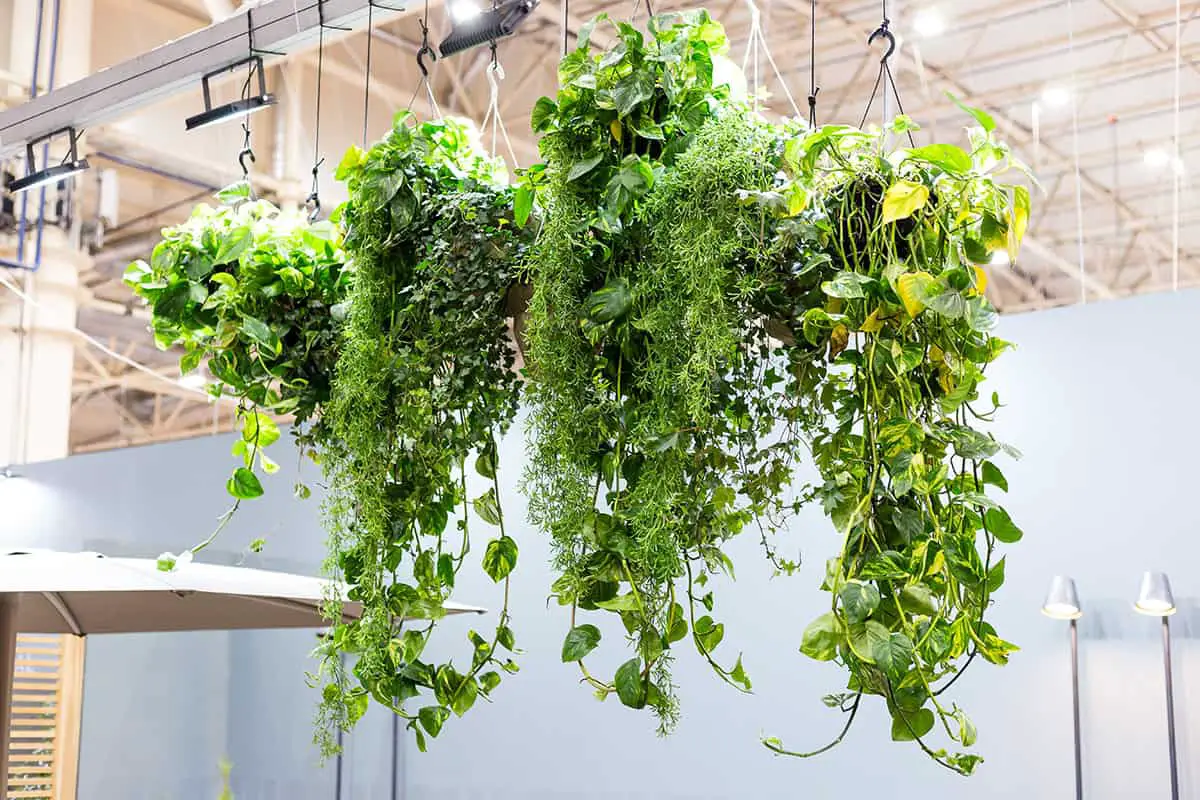You’ve noticed that your living room feels a bit plain and could use some greenery, but you’re short on floor space. Indoor hanging plants are the perfect solution. Here, we will show you how to choose and care for the best hanging plants, turning your home into a vibrant, green sanctuary.
Table of Contents
- Spider Plant (Chlorophytum Comosum)
- Pothos (Epipremnum Aureum)
- String Of Pearls (Senecio Rowleyanus)
- English Ivy (Hedera Helix)
- Boston Fern (Nephrolepis Exaltata)
- Philodendron (Philodendron Hederaceum)
- String Of Hearts (Ceropegia Woodii)
- Burro’s Tail (Sedum Morganianum)
- Maidenhair Fern (Adiantum)
- Air Plants (Tillandsia)
- Heartleaf Philodendron (Philodendron Scandens)
- Peperomia (Peperomia Scandens)
- Asparagus Fern (Asparagus Densiflorus)
- Lipstick Plant (Aeschynanthus Radicans)
- Trailing Jade (Senecio Jacobsenii)
- Hoya (Hoya Carnosa)
- Fuchsia (Fuchsia Spp.)
- String Of Bananas (Senecio Radicans)
- Creeping Fig (Ficus Pumila)
- Wax Ivy (Senecio Macroglossus)
Spider Plant (Chlorophytum Comosum)

The Spider Plant, scientifically known as Chlorophytum comosum, is a favorite among indoor gardening enthusiasts. You can easily recognize it by its grass-like leaves and distinctive white or yellow stripes. It’s especially prized for its air-purifying qualities.
Ideal conditions include well-drained soil and indirect light. It’s resilient, thriving even when you forget to water it from time to time. The Spider Plant is also known for its quick growth and abundance of plantlets.
These plantlets are small, spider-like offshoots that dangle from the mother plant, resembling spiders on a web. You can propagate them effortlessly. Simply place the plantlets in soil or water until roots develop, then plant them.
The Spider Plant prefers bright, indirect sunlight. Water it well, but let the soil dry out between waterings to prevent root rot. If the leaves tips turn brown, it’s often a sign that you need to adjust the watering frequency or water quality.
This plant is not only aesthetically pleasing but also beneficial for your home environment. It’s known to effectively remove pollutants from the air, contributing to a healthier living space.
Pothos (Epipremnum Aureum)
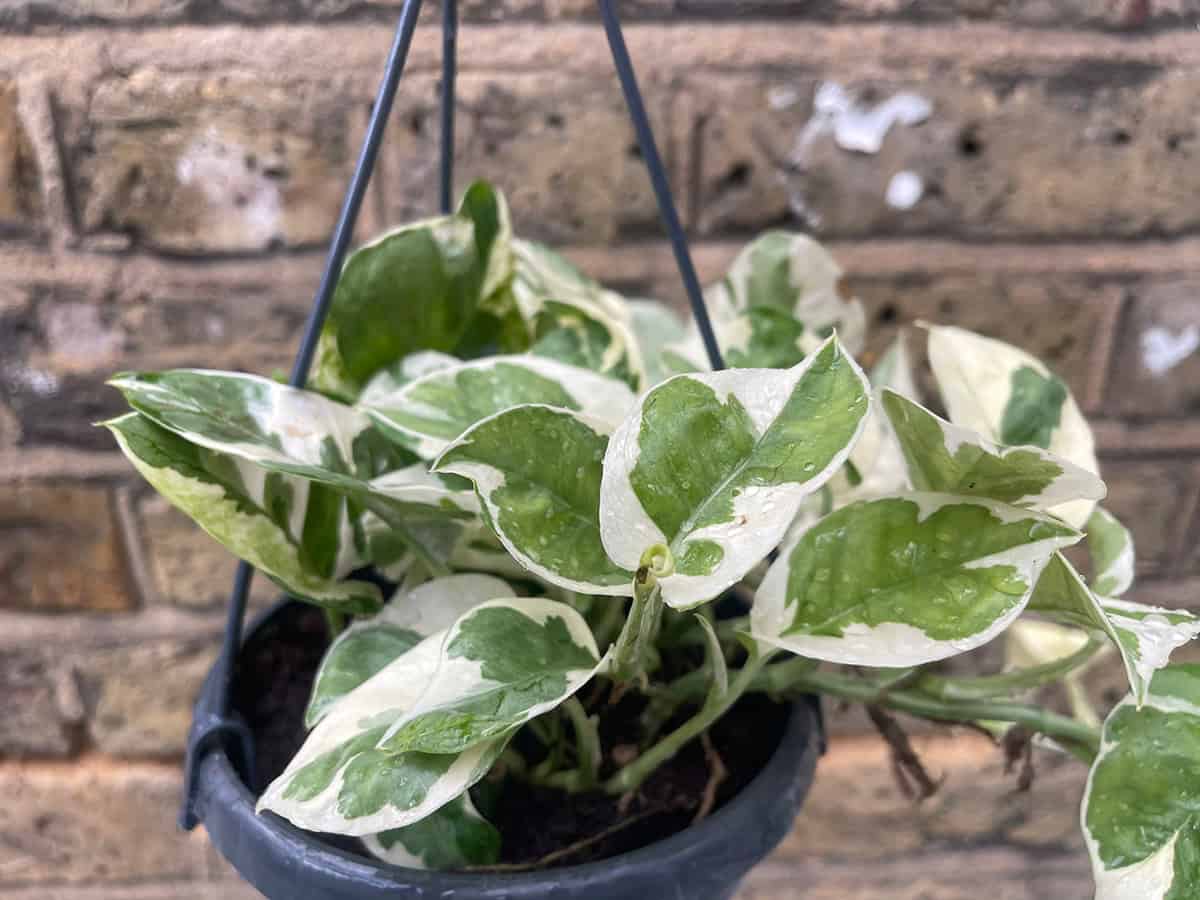
Pothos plants are a top choice for indoor hanging displays. With their heart-shaped leaves and trailing vines, they add a touch of greenery to any room. Epipremnum Aureum thrives in a variety of light conditions, making it ideal for various homes. They prefer bright, indirect light. Place them near a window, but away from direct sunlight to avoid leaf burn. In lower light, they’ll grow slower but remain healthy.
For Watering, allow the soil to dry out between waterings. Overwatering may lead to root rot. Check the top inch of soil; if it’s dry, your plant is ready for water.
You can easily propagate Pothos. Cut a vine below a node and place it in water. Roots will develop, and you can plant them in soil to start a new vine.
Pothos plants can grow in hanging baskets or climb up a structure. They are also known for their air-purifying qualities, helping to remove toxins from the environment.
String Of Pearls (Senecio Rowleyanus)
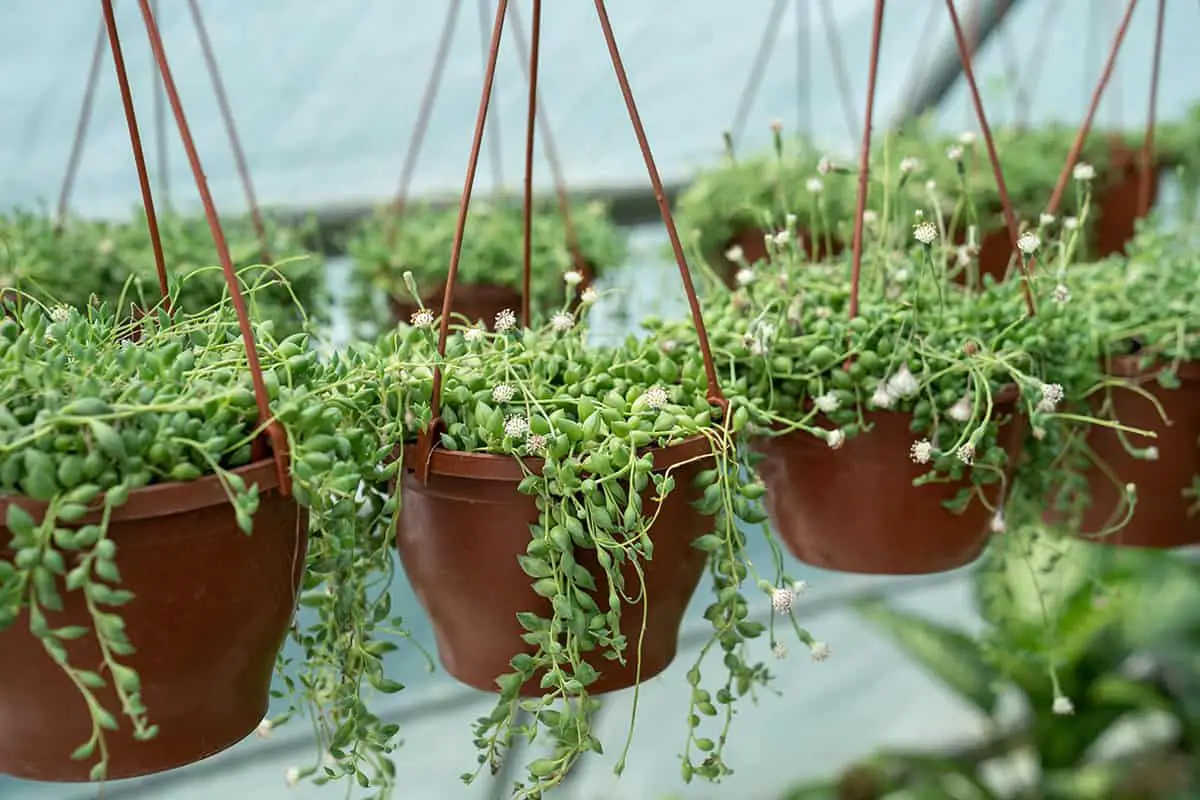
The String of Pearls adds a unique touch to your indoor space. This plant, known scientifically as Senecio rowleyanus, thrives as a hanging plant. It is easy to recognize by its distinct pea-shaped leaves. These leaves cascade beautifully, resembling a beaded necklace.
Your care for this plant is straightforward. It needs bright indirect light to flourish. Place it near a window where it receives ample light but is shielded from harsh sun. Soil should be well-draining to prevent root rot. Water only when the soil is dry.
S. rowleyanus flowers rarely indoors. If flowers appear, they are small and white with red stamens and yellow anthers, a pleasant surprise. The plant can grow long, so periodic pruning helps maintain its size.
This succulent is native to arid environments. It stores water in its leaves, which reduces your watering duties. You should avoid overwatering, as this can be detrimental. Handle with care; the delicate leaves may fall off if disturbed.
In frost-free climates, the String of Pearls can be grown outside. However, as an indoor plant, it provides a refreshing green accent all year round. Its unique appearance and effortless care make it a popular choice for plant lovers.
English Ivy (Hedera Helix)
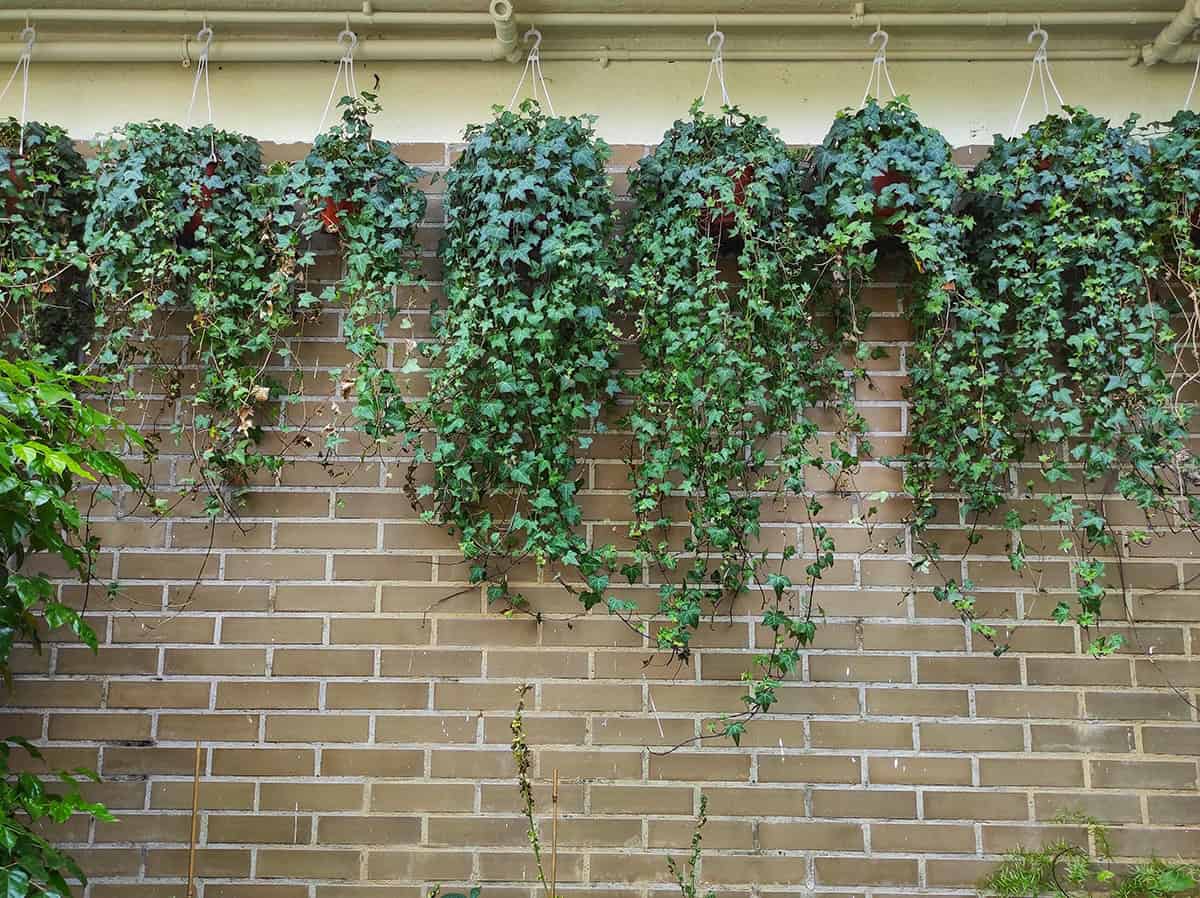
English Ivy, scientifically known as Hedera helix, is a popular choice for an indoor hanging plant. This hardy evergreen vine thrives in a variety of indoor settings. It can adapt to different light conditions, from bright, and indirect light to low-light spaces. You can grow English Ivy in your home for its elegant trailing vines and lush foliage, which can purify the air.
Hedera helix, when draped from a basket or shelf, can add a touch of greenery to your interior decor. It’s often used to create a cascading effect in a room, contributing to a serene and refreshing environment. Remember to handle the plant cautiously, as its leaves can cause skin irritation in some people.
Boston Fern (Nephrolepis Exaltata)
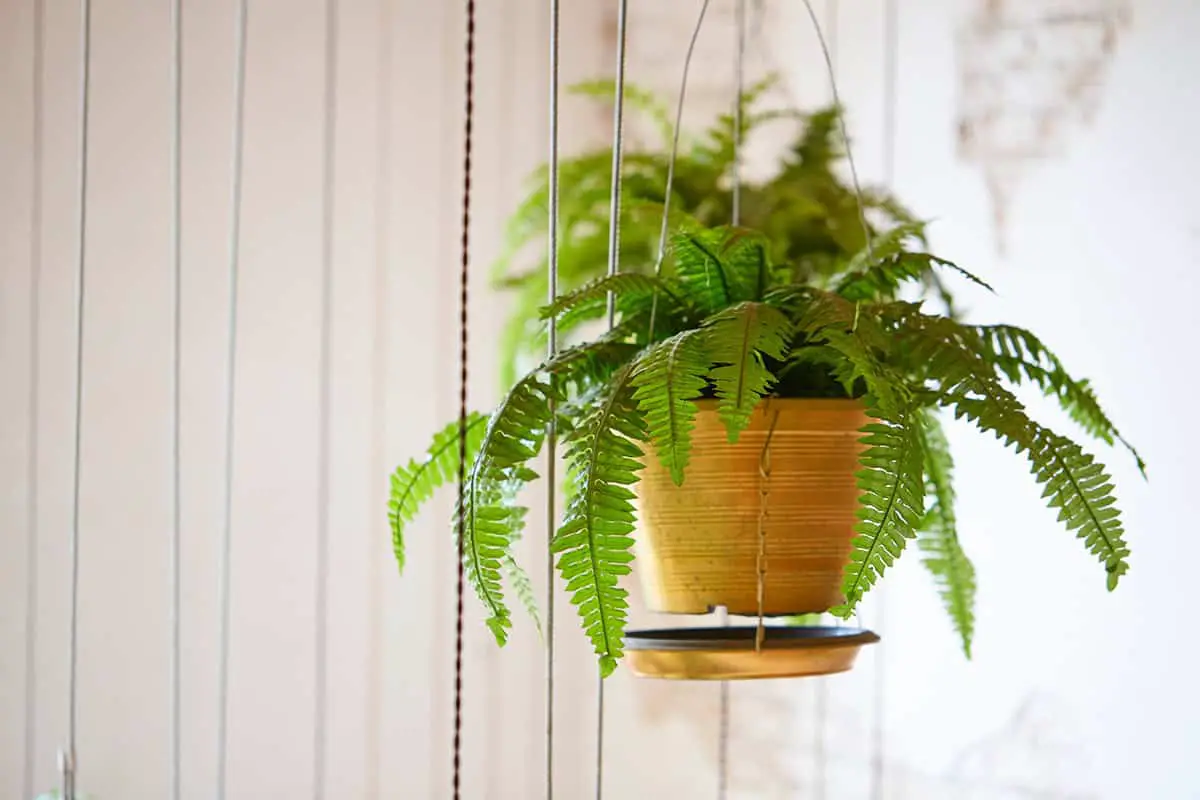
Boston Ferns brighten your home with lush greenery. They are popular indoor hanging plants. You can grow them easily in your space. These ferns thrive in indirect light and prefer a warm and humid environment.
The key to their care is maintaining moist soil. Be careful not to let the soil dry out. It’s ideal to keep them near kitchens and bathrooms. These areas have higher humidity, which Boston Ferns love.
Boston Ferns clean the air you breathe. They remove toxins and improve indoor air quality. Their cascading fronds can grow quite long. They make a dramatic impact in hanging baskets.
Remember to water them with room temperature water. The fronds can turn yellow if the water is too cold. During growth periods, you should provide them with a diluted fern fertilizer.
In dry climates, consider placing your fern on a tray of wet pebbles. This enhances the humidity around the plant. Keep the room temperature consistent, ideally between 60-70 degrees Fahrenheit.
Philodendron (Philodendron Hederaceum)
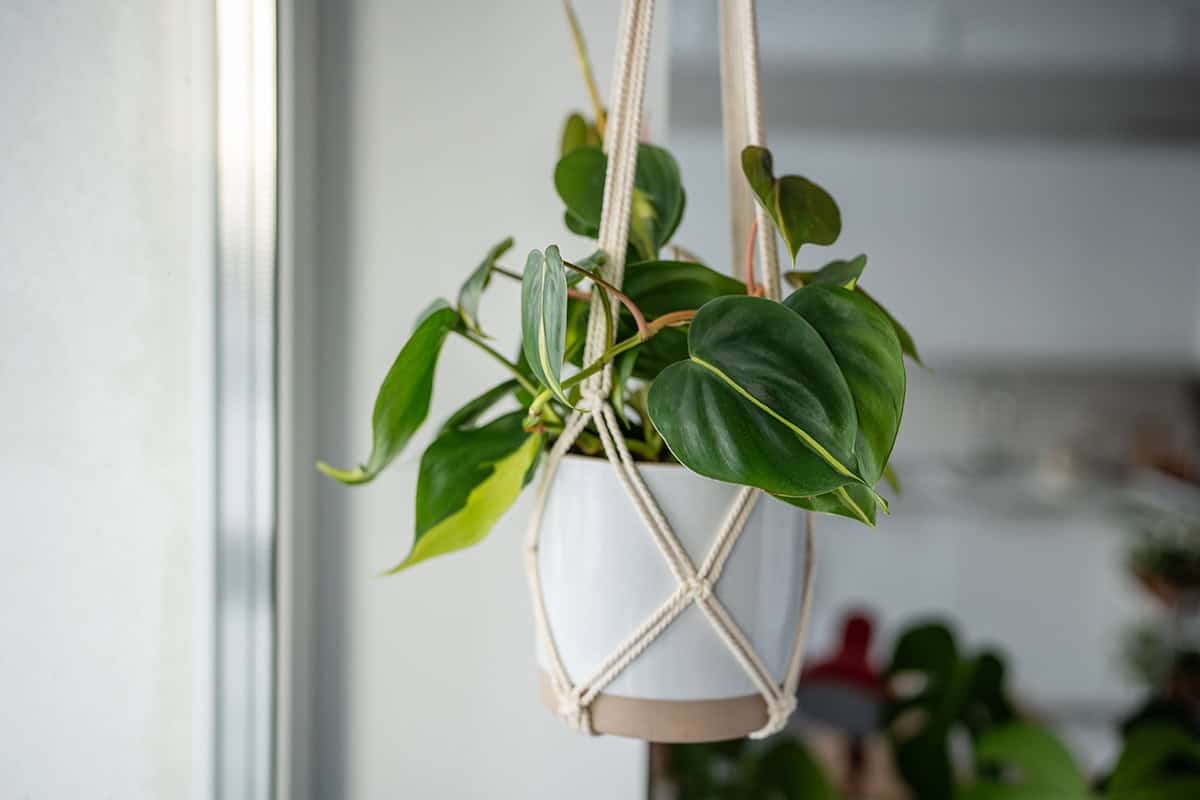
Philodendron Hederaceum, commonly known as Heart-leaf Philodendron, is a popular choice for an indoor hanging plant. You can easily identify it by its glossy, heart-shaped leaves. It’s a tropical evergreen that can bring a touch of the rainforest into your home.
This plant thrives in indirect sunlight but adapts well to low-light conditions, making it ideal for rooms that don’t receive much natural light. Your Philodendron Hederaceum prefers moist soil, yet it is relatively drought-tolerant when necessary. To keep your plant healthy, allow the top inch of soil to dry out between watering.
Philodendron Hederaceum is not just admired for its attractive foliage; it’s also known for its air-purifying qualities. This trait makes it not only a decorative piece but also a functional addition to your indoor space. Bear in mind, however, that this plant has low-severity poison characteristics, so it should be kept out of reach of pets and children.
For a lush display, position your Philodendron to cascade elegantly from a shelf or hanging pot. As it grows, you may need to trim it back to maintain your desired shape and length.
String Of Hearts (Ceropegia Woodii)
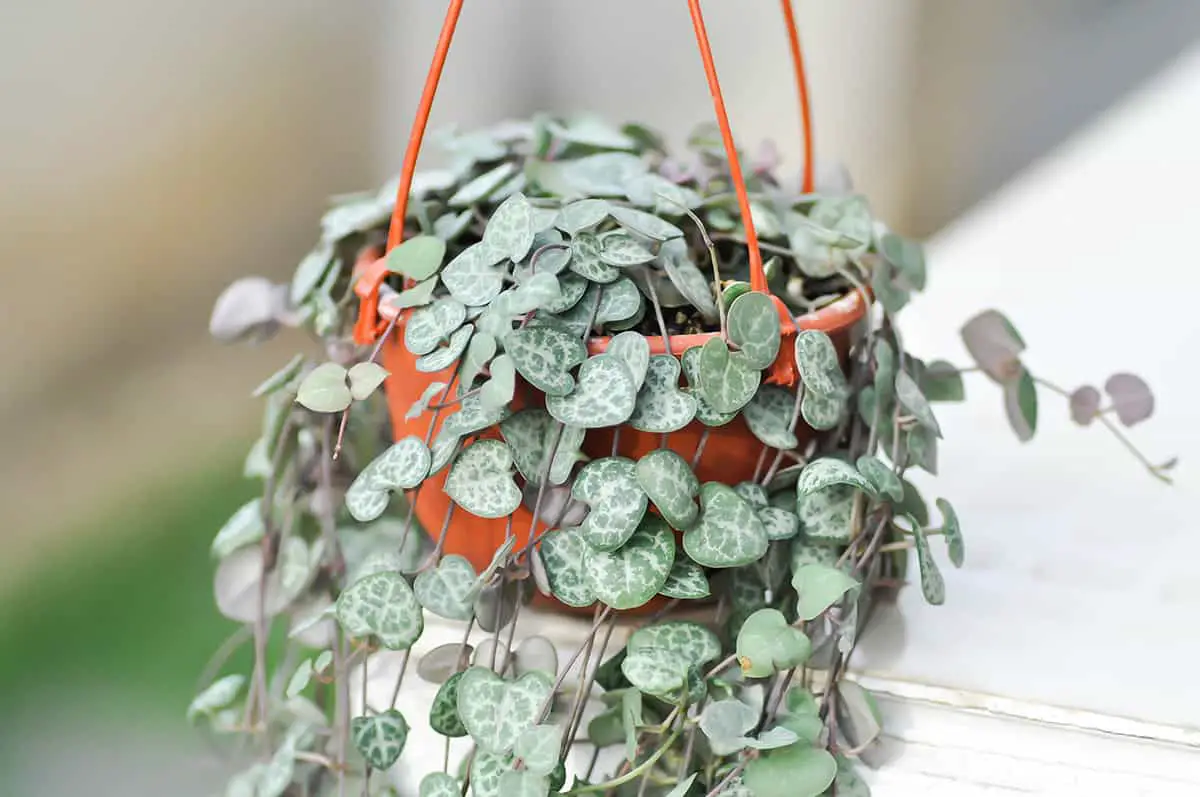
The String of Hearts is a captivating hanging plant for your indoor space. Its botanical name is Ceropegia woodii. Heart-shaped leaves drape down in tendrils, displaying shades of green, silver, and pink. Due to its modest care requirements, this plant suits beginners.
Your String of Hearts prefers bright, indirect light. It can thrive even in a west or south-facing window. Ensure you let the soil dry out completely between waterings. Overwatering can lead to root rot, which this plant is prone to in soggy conditions.
Being a succulent vine, it stores water in its leaves. This means you don’t need to water it as frequently as other houseplants. Its tendrils can grow several feet long, making it an excellent choice for hanging baskets or high shelves.
To keep your plant healthy, provide it with a well-draining potting mix and a container with drainage holes. If you notice the color of the leaves fading, it might be a sign of too much direct sunlight. In the winter, reduce watering to match the plant’s slower growth.
Burro’s Tail (Sedum Morganianum)
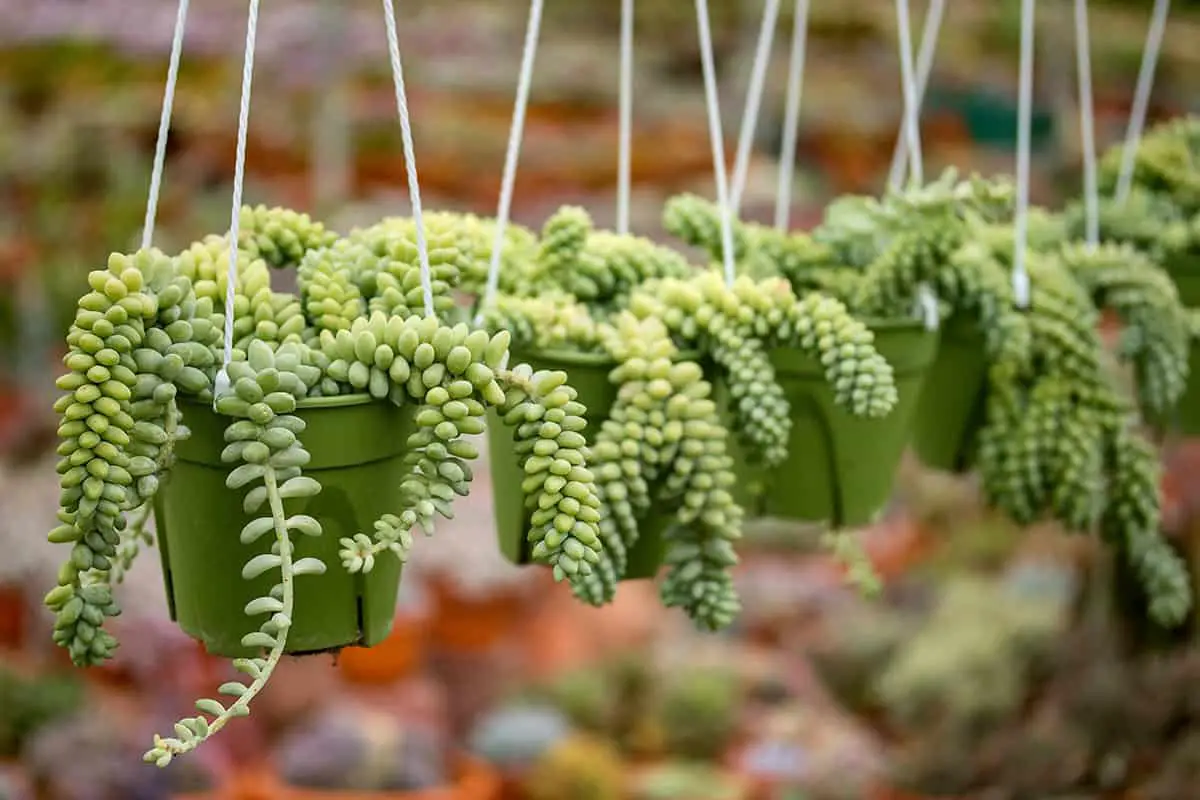
Burro’s Tail, or Sedum Morganianum, thrives indoors with minimal attention. This plant boasts fleshy, blue-green leaves that cascade beautifully over the pot’s edge, making it ideal for hanging baskets. You can enjoy its long, trailing stems. They often reach lengths of two to three feet.
Your Burro’s Tail prefers bright but indirect light. Keep it in a warm room without drafts. Direct sunlight may scorch its leaves, while too little light can cause it to become leggy.
Let the top inch of the soil dry out before watering again. This succulent stores water in its leaves. Overwatering can lead to root rot. Aim for consistent moisture without soaking the plant.
The leaves of Burro’s Tail are delicate. They may fall off when touched, so handle with care during watering or moving. It’s simple to regrow these leaves to multiply your Burro’s Tails.
Maidenhair Fern (Adiantum)
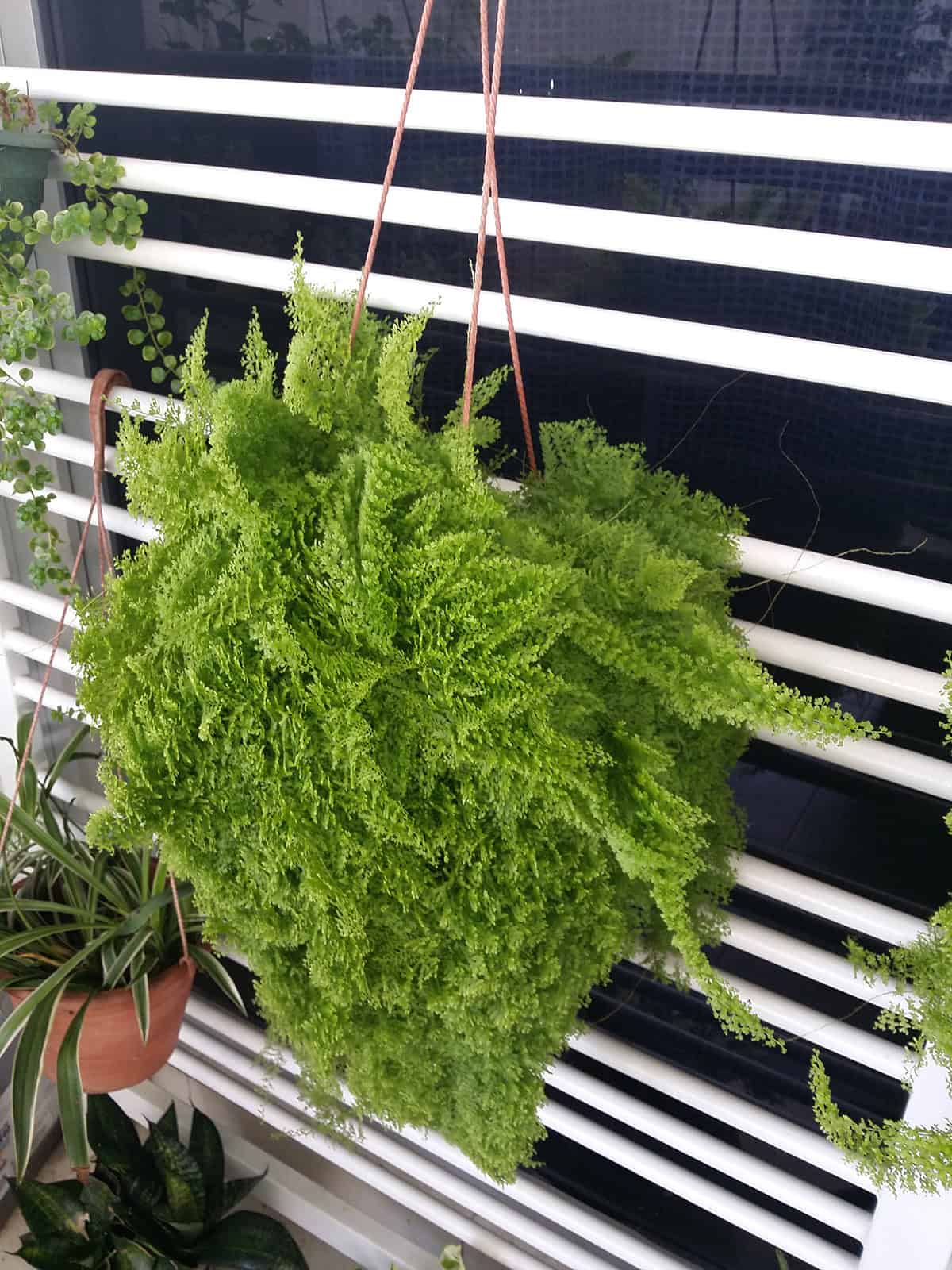
Maidenhair ferns add elegance to your indoor spaces. Their delicate leaves and fine textures stand out among other plants. You can easily identify Adiantum by its feathery, light green fronds and black stems.
In your care, maintain a moist environment for the Adiantum. This plant thrives on consistent moisture without waterlogging. Place it in indirect light and watch its fronds unfold. Room humidity is key; consider a humidifier if your air is dry.
Adiantum prefers well-drained soil. Opt for a mix high in organic matter. When hanging, ensure the pot allows for drainage to prevent root rot. The plant’s soil should feel damp, never soggy.
Your Maidenhair fern requires minimal feeding. Fertilize lightly during the growing seasons. Pruning isn’t necessary, but you can trim dead fronds to keep the plant looking fresh.
Air Plants (Tillandsia)
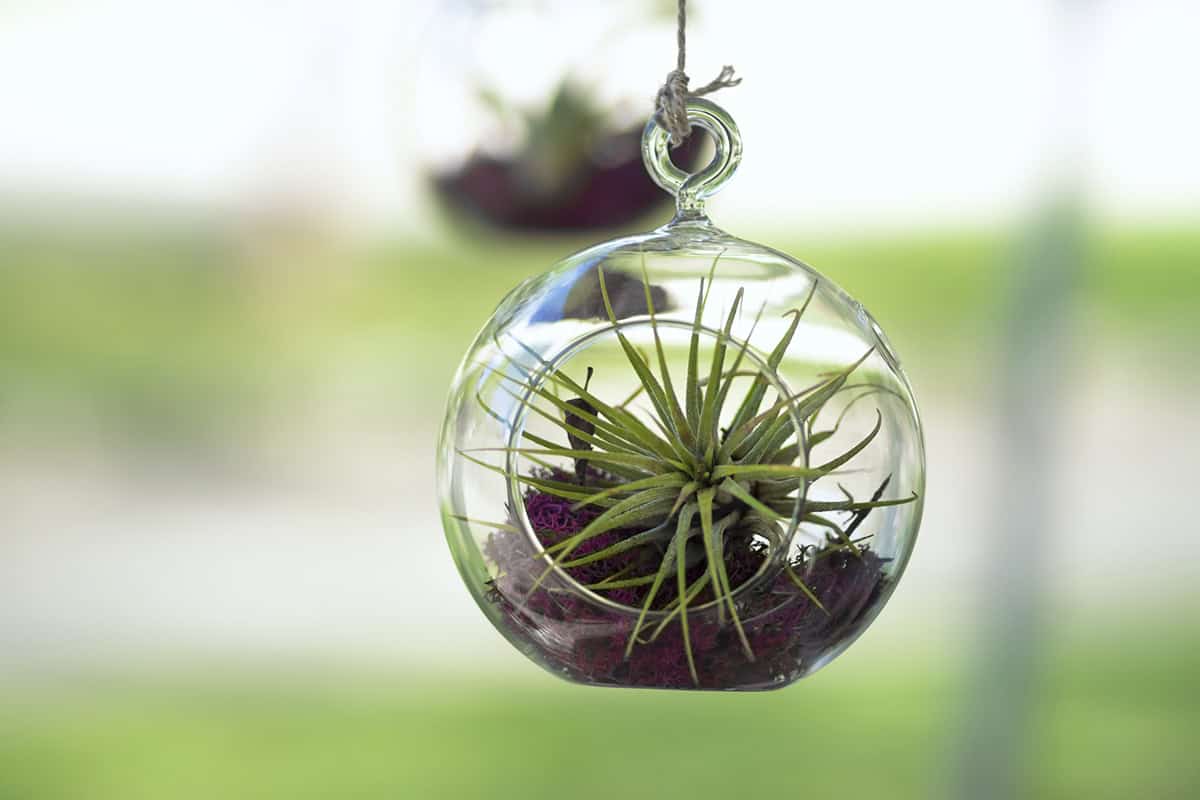
Air plants brighten your indoor space. They need no soil to grow, a feature that makes them unique among houseplants. Tillandsia, their scientific name, thrive when suspended in air or attached to a structure.
Care for these plants is simple. You should mist them weekly, and you can submerge them in water for a brief soak if needed. Ensure they get plenty of indirect sunlight and air circulation to promote health and growth.
Air plants come in various shapes and sizes. Some have thin, spiky leaves while others boast a softer, bushy appearance. Their ability to flower adds color and vibrancy to your home.
The versatility of Tillandsias allows for creative displays. You can hang them in glass terrariums or mount them on driftwood or stones. Their adaptability makes them suitable for most indoor environments.
Remember that air plants absorb nutrients and water through their leaves. It’s crucial to keep this in mind when choosing their location in your home.
Heartleaf Philodendron (Philodendron Scandens)
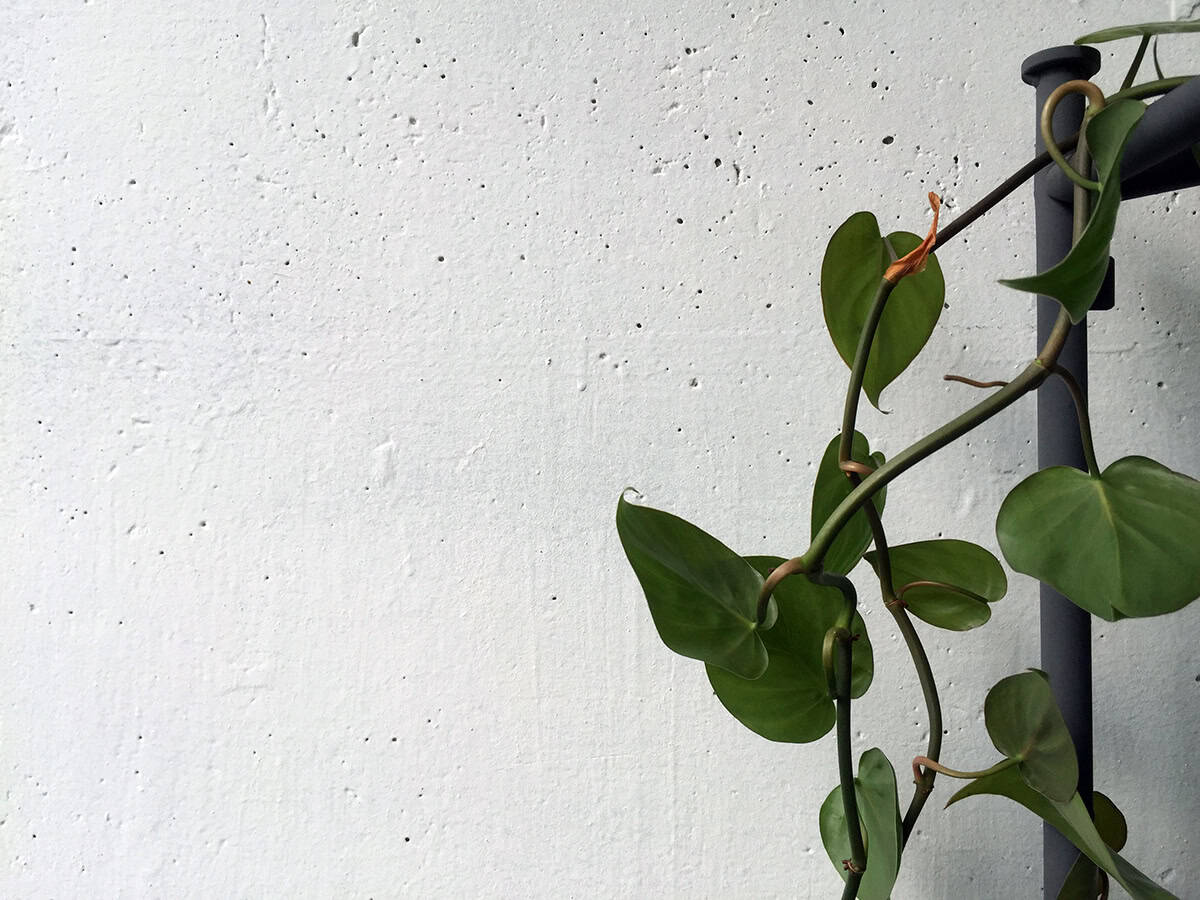
Heartleaf Philodendron brings a lively touch to your indoor space. Its cascading vines offer lush greenery, making it a charming addition to your home. This plant thrives in low light, allowing flexibility in placement. With its rich, heart-shaped leaves, it doubles as a striking decorative element.
Your care for the Heartleaf Philodendron remains straightforward. It prefers moist soil but dislikes waterlogged conditions. Overwatering can harm the plant, so allow the top inch of soil to dry between waterings. This encourages healthy root growth and prevents rot.
Fertilization gives your plant a boost. Feed it during the growing season with a balanced, water-soluble fertilizer. This sustains its vibrant foliage. In winter, minimize feeding, as the plant enters a rest period.
Peperomia (Peperomia Scandens)
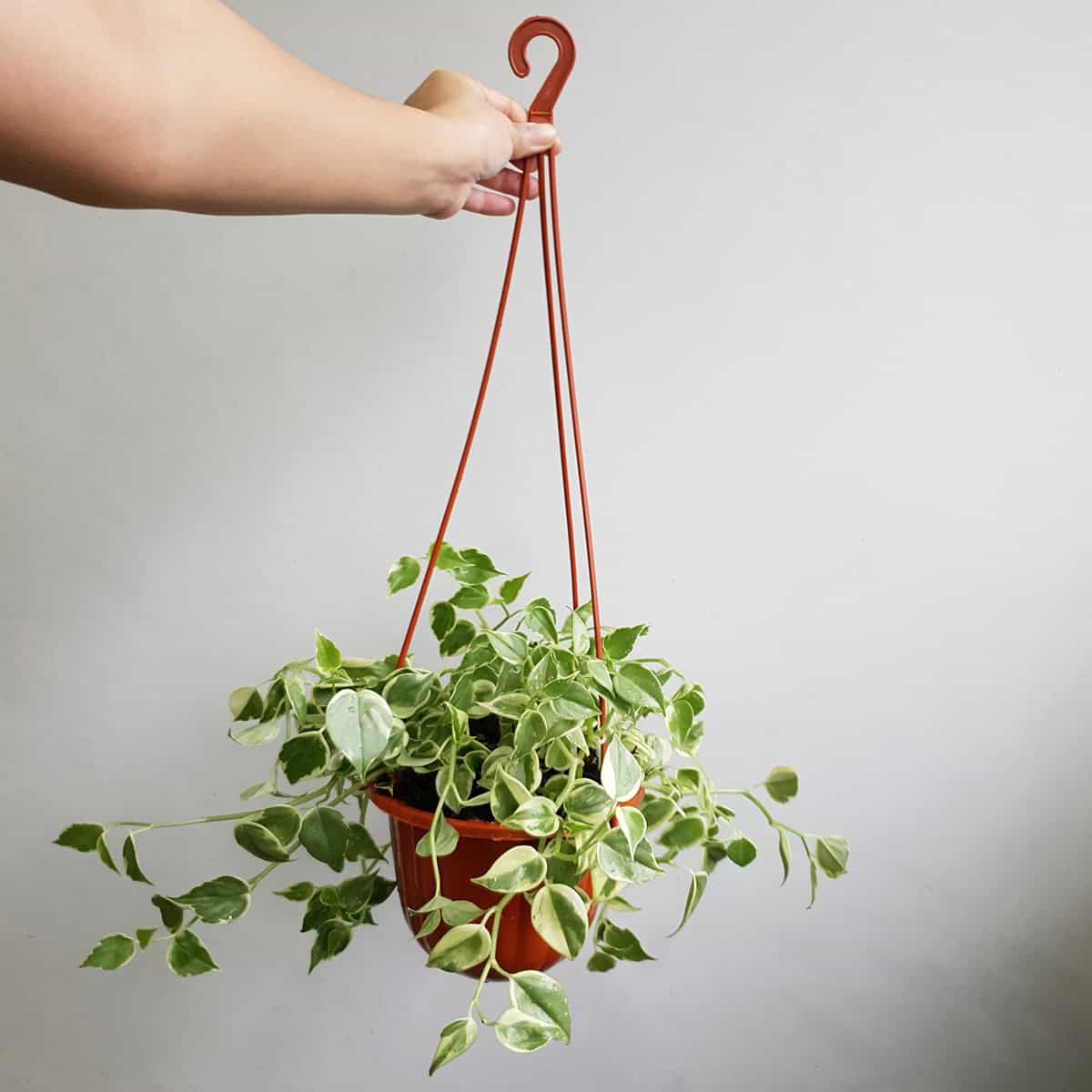
Peperomia scandens, known as the False-Philodendron, is a favorite for indoor hanging baskets. You may recognize it by its fleshy, heart-shaped leaves that trail or climb, adding a touch of greenery to your space.
This plant thrives in indoor environments with bright, indirect light and moderate humidity. You will want to ensure the soil is well-draining to prevent root rot, a common issue with over-watering.
Propagation is straightforward with Peperomia scandens. Simply take a stem cutting and root it in water or soil. In time, you will have a new, vigorous plant.
For care, balance is key. Ensure you water the plant when the top inch of soil feels dry. Fertilize it sparingly, more during the growing season. This makes it an ideal plant for those new to indoor gardening.
Looking for varieties? Look for the ‘Variegata’ cultivar. Its leaves feature creamy white edges, providing a striking contrast. For more detailed information on this variety and caring for your Peperomia scandens, visit the University of Florida’s Peperomia Production Guide.
Asparagus Fern (Asparagus Densiflorus)
The Asparagus Fern is a vibrant houseplant that adds a touch of greenery to your indoor space. Its fine foliage has a feathery appearance, which enhances textural contrast when placed alongside plants with broader leaves. You can easily incorporate Asparagus Fern into your living area, using it to bring life to shelves or hanging baskets.
This plant thrives under medium-light conditions. An east-facing window is ideal for your Asparagus Fern to flourish. Remember to water with room temperature water and maintain a consistent moisture level without overwatering. High humidity benefits this plant, so consider its placement in your home carefully.
You might notice the Asparagus Fern producing small yellow-green flowers and, eventually, bright red berries. These features add to the ornamental value of this indoor plant. Manageable in size, it reaches up to 3 feet indoors, making it suitable for various locations inside your home.
Caring for your Asparagus Fern involves regular irrigation and well-drained soil. If you want to maintain a healthy appearance, provide it with full sun or partial shade.
For plant enthusiasts looking for a moderately salt-tolerant option, Asparagus Fern is a reliable choice. Whether in a container or the landscape, it makes a lasting impression with its delicate and intricate foliage. Keep this plant in your hanging basket, and it will reward you with its elegant growth.
Lipstick Plant (Aeschynanthus Radicans)

The Lipstick Plant, Aeschynanthus radicans, is a popular indoor hanging plant known for its bright red flowers that resemble a tube of lipstick. Native to humid, tropical regions, it thrives in your home with minimal care.
Place your Lipstick Plant in bright, indirect sunlight. Water it moderately, allowing the soil to dry slightly between waterings. Keep it in warm conditions, ideally between 65°F and 75°F.
This plant’s cascading vines make it a great choice for hanging baskets. With its glossy leaves and vivid blooms, it adds a splash of color to any room. Expect modest growth indoors, and regular pruning helps maintain its bushy appearance.
For those with limited space, the Lipstick Plant is ideal due to its compact size and ornamental quality. Its low maintenance and year-round flowers are perfect for busy plant lovers.
Trailing Jade (Senecio Jacobsenii)
Trailing Jade is an elegant houseplant with a cascading growth habit. You’ll notice its fleshy, teardrop-shaped leaves form a dense mat, typically turning a rich shade of purple when touched by the sun. It’s a striking choice for your indoor hanging baskets.
This plant thrives in bright, indirect light. Too much direct sunlight may scorch its leaves, while low light conditions can hinder its vibrant coloration. Care for your Trailing Jade by letting the soil dry out between waterings. Overwatering can harm the plant, so ensure the pot has drainage holes.
You don’t need to worry much about humidity; Trailing Jade is not particularly demanding. However, remember to provide it with a well-draining soil mix to prevent root rot. Pruning is minimal but can stimulate denser growth.
Lastly, Trailing Jade is best kept out of reach from pets and children. It contains compounds which can be toxic if ingested.
Hoya (Hoya Carnosa)
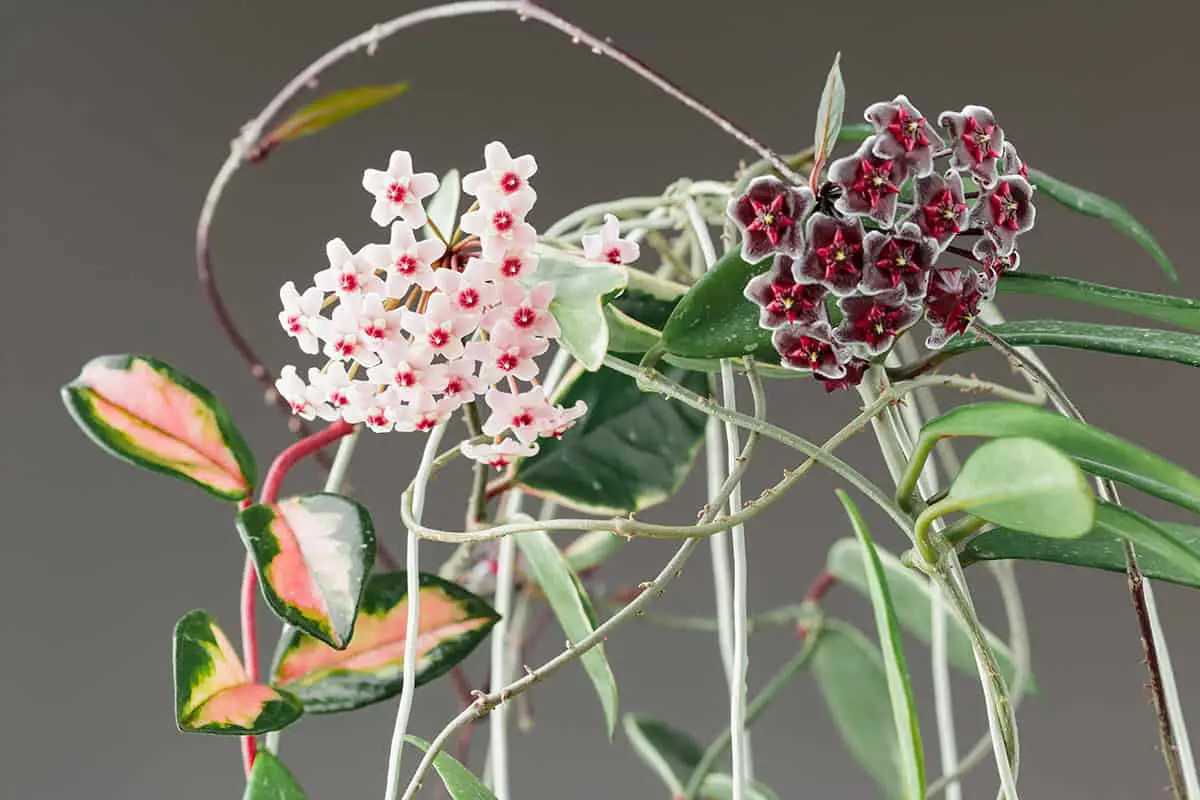
Hoya Carnosa, often known as the wax plant, is a popular choice for an indoor hanging plant. Its thick, waxy leaves add a lush, green touch to your home and it thrives indoors with minimal care.
Hoya Carnosa loves bright, indirect light, as too much direct sunlight can damage the leaves. Water your Hoya when the top inch of soil feels dry, as overwatering can lead to root rot.
The wax plant is a climber and will need support to grow vertically. If you prefer the Hoya to hang, provide a basket for it to cascade downwards. As it grows, you can expect it to reach lengths of up to four feet.
Hoyas are known for their beautiful, fragrant flowers, which bloom in clusters that look like stars. To encourage flowering, let the plant become root-bound.
Keep your Hoya Carnosa dust-free to maintain its health and shine by gently wiping the leaves with a damp cloth if they get dusty. Remember, Hoyas enjoy high humidity but can tolerate less humid environments.
Fuchsia (Fuchsia Spp.)
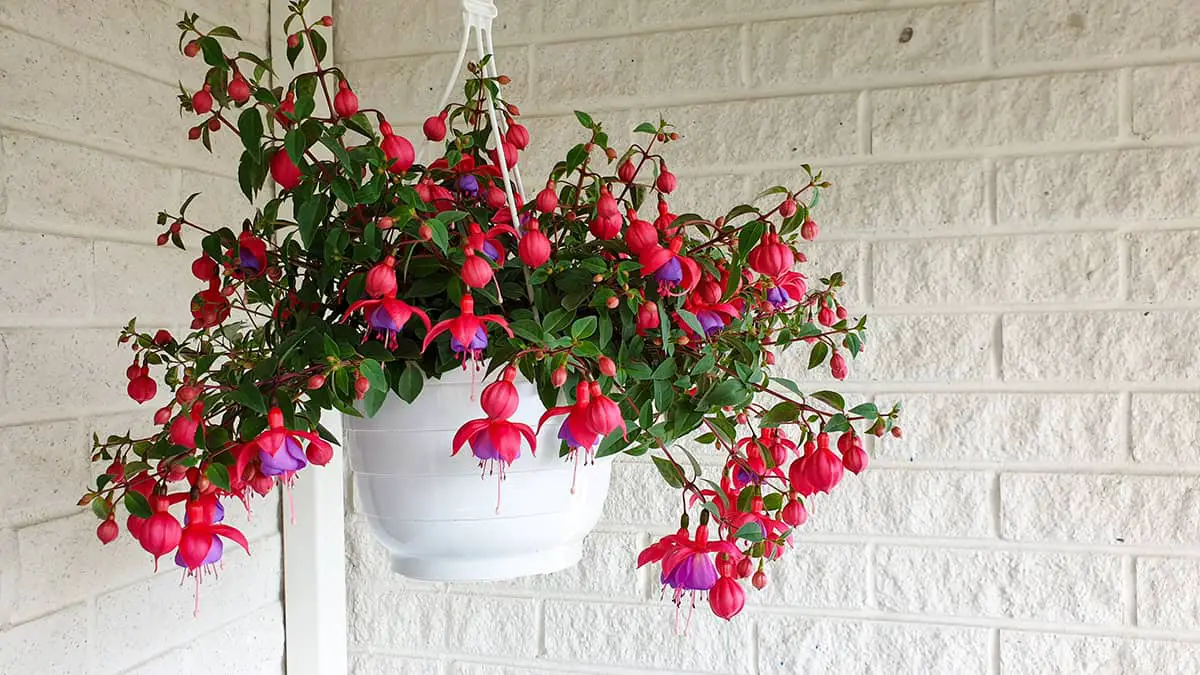
Fuchsia, also known as ladies’ eardrops, is a stunning addition to your indoor hanging plant collection. These plants boast a profusion of graceful, bell-shaped flowers that dangle delightfully from baskets. They belong to a genus that encompasses around 100 species, offering a wide range of colors and forms to complement your interior space.
When you choose fuchsia for your home, you commit to a plant that requires consistent care. They thrive in bright, indirect light and benefit from frequent watering. It’s essential to keep the soil moist, but be cautious to avoid waterlogging, which can harm the plant. A regular feeding schedule with a dilute fertilizer solution will ensure vibrant blooms and healthy growth.
As the seasons change, your fuchsia will need different care approaches. When you overwinter fuchsias, they must be pruned back and placed where they can get sufficient light. This prepares them for flourishing again in the growing season.
By choosing a fuchsia plant, you introduce a versatile and attractive element to your home. Its captivating flowers can refresh any room.
String Of Bananas (Senecio Radicans)
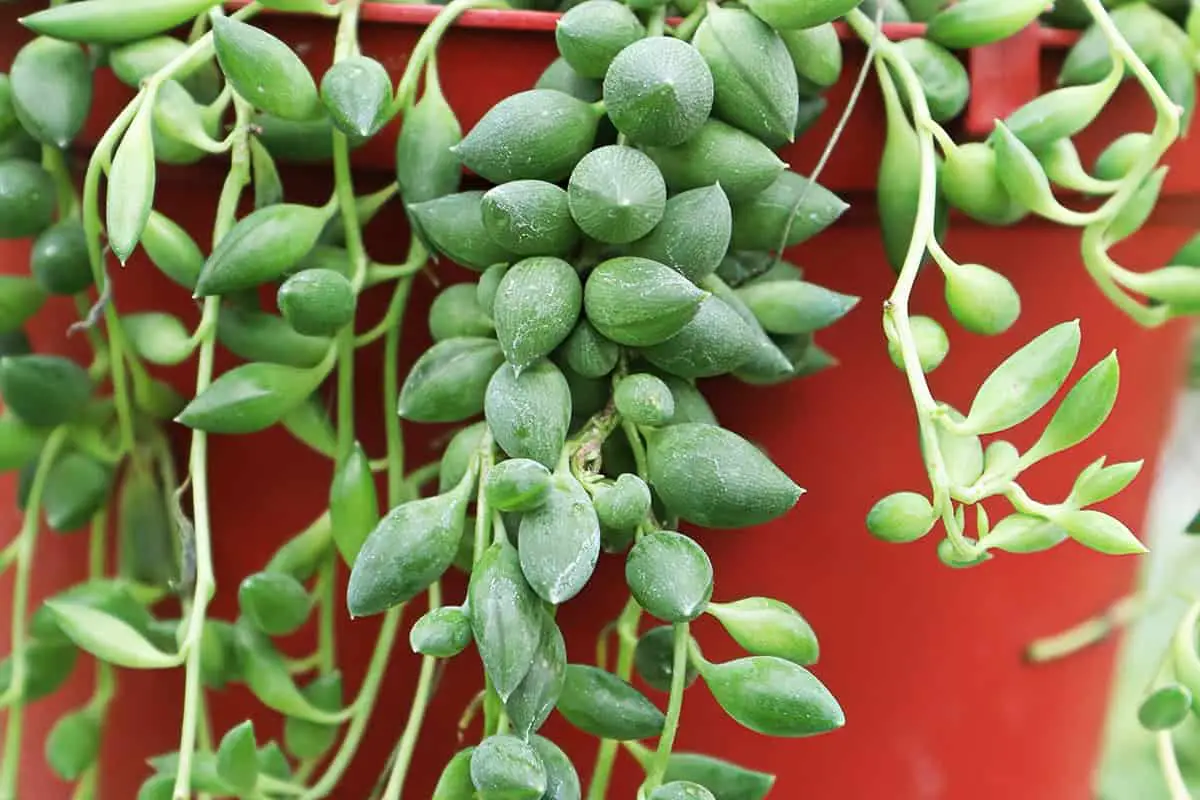
The String of Bananas, known scientifically as Senecio radicans, is a succulent plant cherished for its long, cascading stems that resemble a bunch of tiny green bananas. This plant thrives indoors with bright, indirect light and minimal care, making it a favorite among plant enthusiasts.
Bright, indirect sunlight suits this plant best. Let the soil dry out before watering again, as over-watering can harm the plant. It prefers mild to warm conditions, ideally between 65-75°F (18-24°C), and a well-draining potting mix suitable for cacti or succulents.
Propagation of this plant is straightforward. You can easily grow new plants from cuttings by snipping a piece of the vine, letting the cut end callous, and placing it in soil. Roots will develop, and a new plant will start to grow, making this process simple and increasing your collection.
Potential issues include over-watering, which could lead to root rot. Additionally, ensure you hang your String of Bananas out of reach of pets, as the leaves can be toxic when ingested.
To showcase its trailing vines, grow your String of Bananas in a hanging basket. This way, the vines can drape down gracefully, adding a touch of greenery to your space.
Creeping Fig (Ficus Pumila)
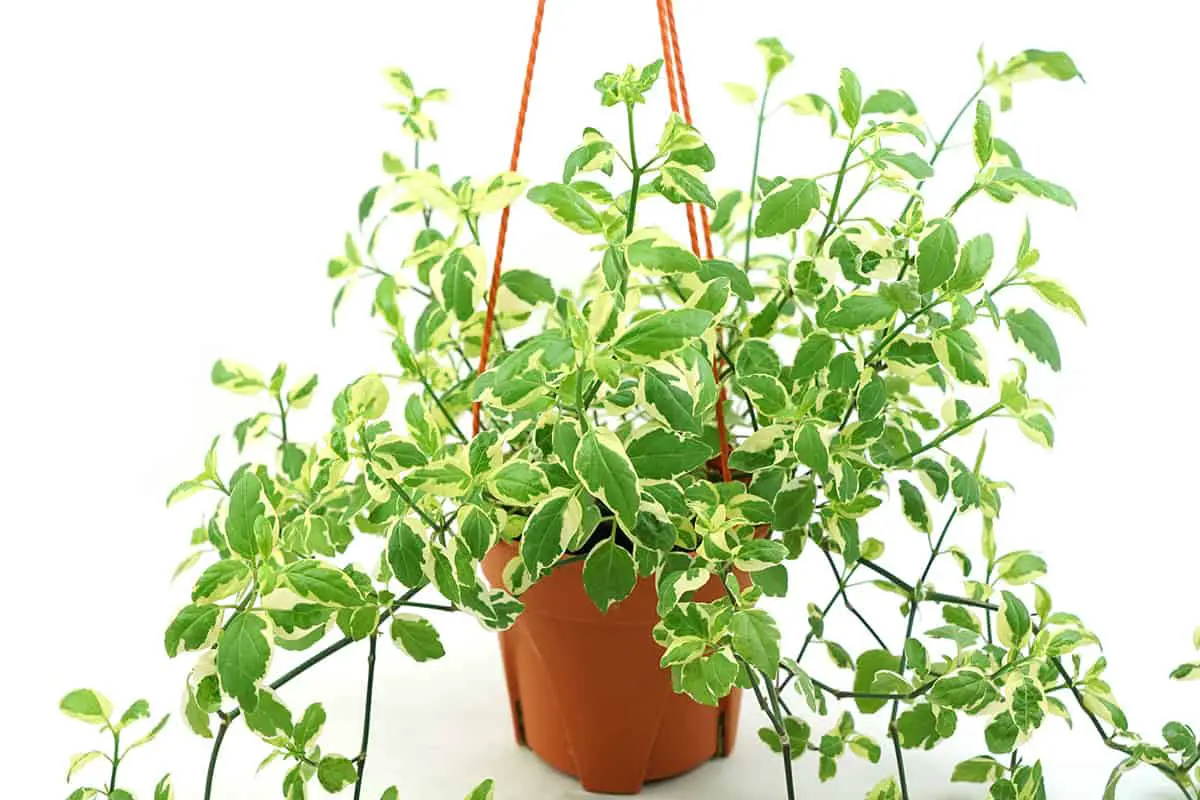
Creeping fig is a popular choice for your indoor hanging plant selection. It thrives indoors with adequate care and adds lush greenery to your space. This plant attaches to surfaces with ease, making it ideal for creating a green curtain or covering walls.
Its care is straightforward. You should place your creeping fig in a spot with indirect sunlight and maintain a consistent watering schedule. Ensure the soil stays moist but not waterlogged. Prune it regularly to promote growth and maintain shape.
Wax Ivy (Senecio Macroglossus)
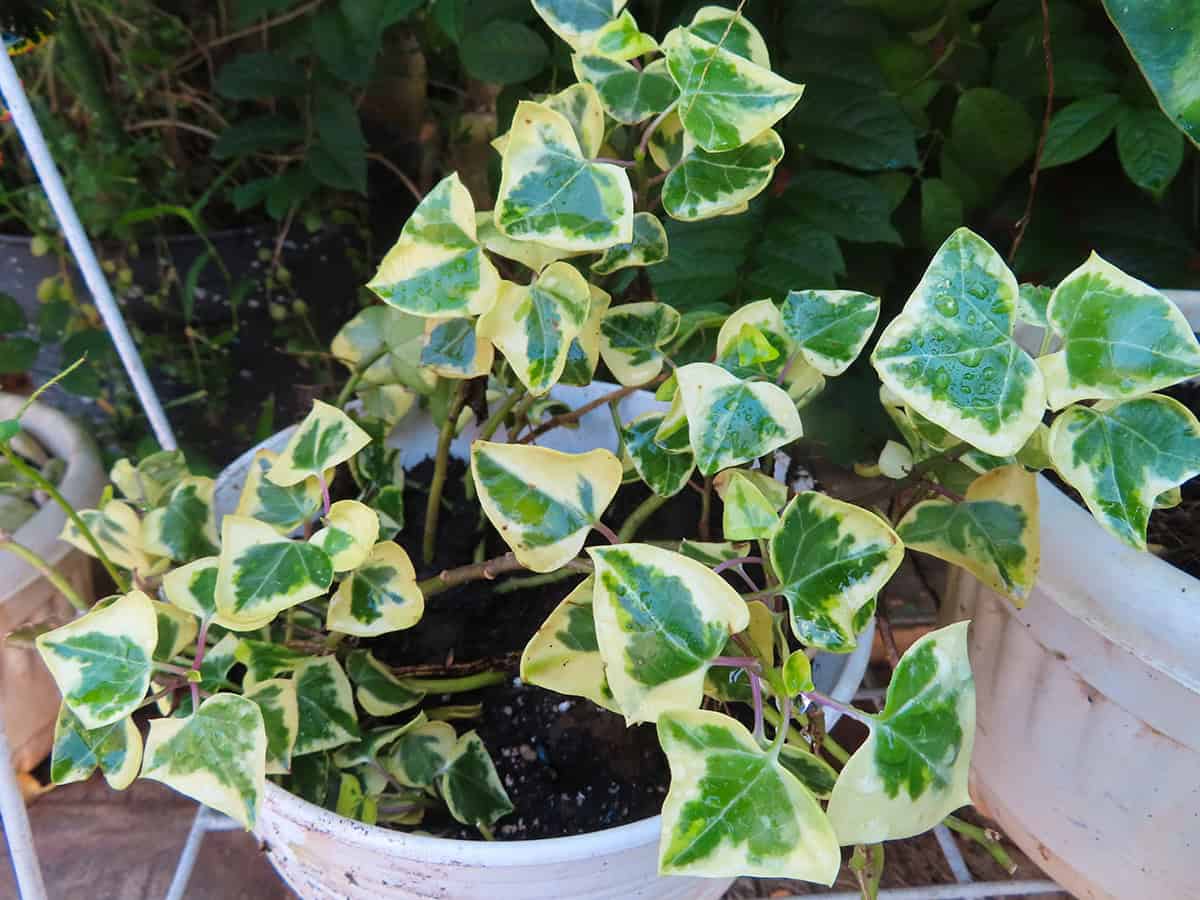
Wax Ivy, a member of the Senecio genus, thrives indoors. Resembling ivy, its glossy, heart-shaped leaves create a vibrant green cascade. You find this plant ideal for hanging containers.
Care for Wax Ivy is straightforward. It needs indirect light and regular watering. Ensure good drainage to prevent root rot. This plant handles cooler indoor temperatures well.
Propagate your Wax Ivy through cuttings. Place them in water until roots develop, then pot them. This method promotes new growth effectively.
Wax Ivy grows efficiently indoors. It can brighten your space throughout the year.
